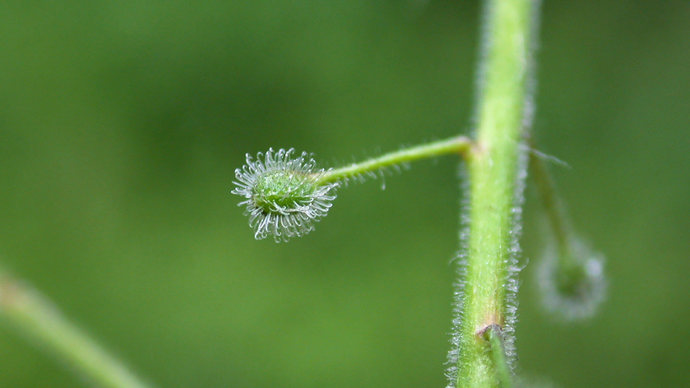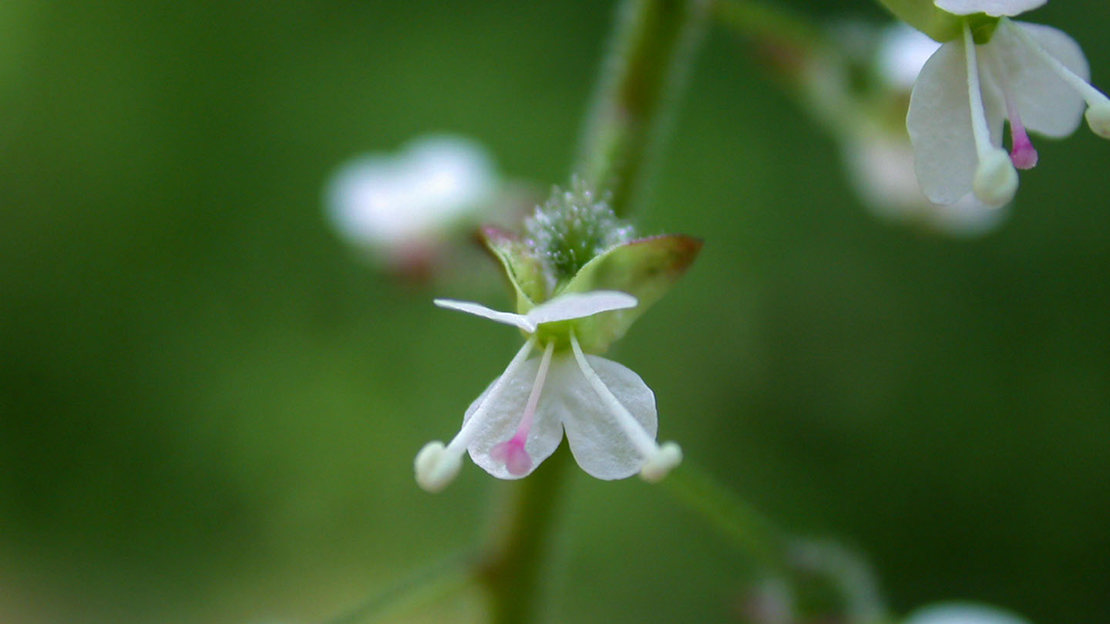Common name: enchanter’s nightshade
Scientific name: Circaea lutetiana
Family: Willowherbs
Origin: native
Flowering season: June to September
Habitat: woodland, grassland, gardens
Delicate, mystical, persistent. Find enchanter’s nightshade in woods and woodland edges, flowering in summer. Considered a weed in most gardens, this plant is just one part of the complex woodland habitat.
Common name: enchanter’s nightshade
Scientific name: Circaea lutetiana
Family: Willowherbs
Origin: native
Flowering season: June to September
Habitat: woodland, grassland, gardens
Thought of as a weed in gardens, enchanter’s nightshade grows in sun-dappled woodland.
Leaves: opposite growing and oval in shape.
Flowers: very small (around 5mm), pinkish-white with two strongly notched petals. The stamens poke out of the flower.
Fruit/seeds: a one-seeded dry fruit – oval in shape. The fruit is covered in bristles with little hooks so they can attach themselves to passing animals and birds for dispersal.

Credit: Blickwinkel / Alamy Stock Photo
Look for enchanter’s nightshade in sun-dappled woodland, flowering between June and September.
Enchanter’s nightshade is a good browse plant for deer.
The Latin name Circaea relates to Circe, an enchantress sometimes depicted as the Greek goddess of magic, who was known for her knowledge of herbs.

Enchanter’s nightshade has been used treat wounds and as a flavouring in Austrian tea. In the Scottish Highlands it was thought to be an aphrodisiac.
Despite its name, enchanter’s nightshade is unrelated to other nightshades. It actually belongs to the willowherb family.